Homonymous hemianopia
Homonymous hemianopia is a loss of half the central field as well as the entire parafoveal and peripheral field opposite the side of surgery. Homonymous hemianopia is a type of cerebral or cortical visual impairment (CVI). Cerebral/cortical vision impairment is a problem with how the brain processes what the eyes see and there are many different types of CVI.
Remember the target that is your field of vision?
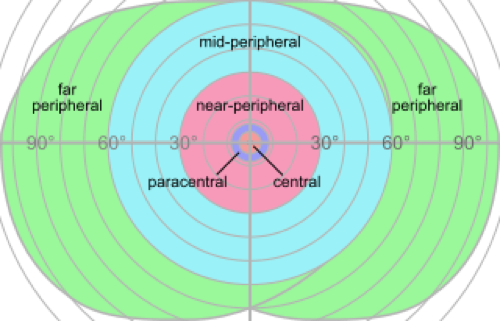
Here’s how a person with right homonymous hemianopsia sees it:
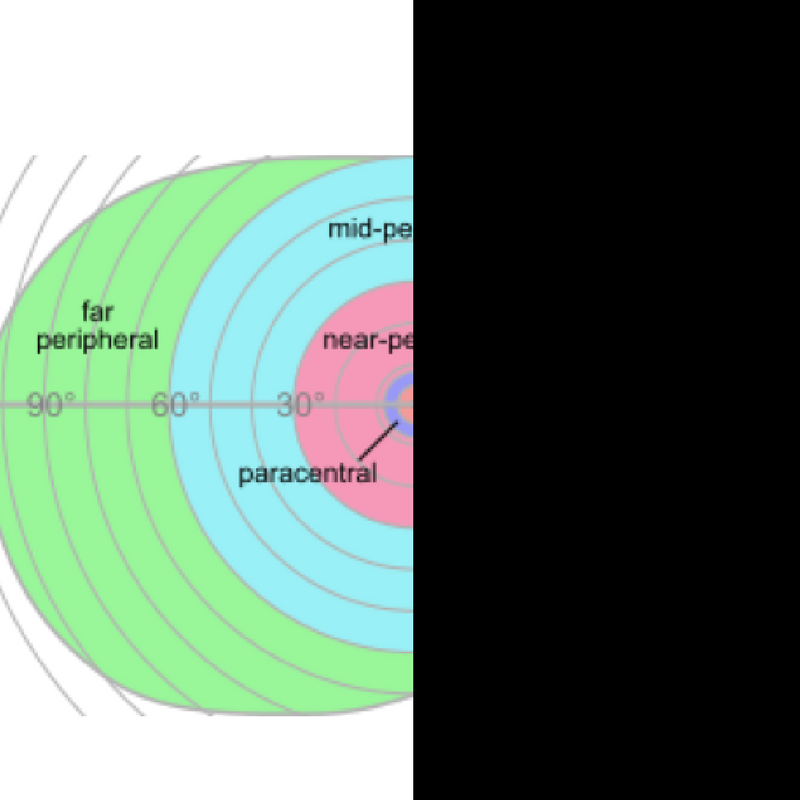
Does the child see black in the lost visual field?
No. The child lacks vision in the lost visual field in the same way that you lack vision behind you. You do not see black behind you, but instead see nothing.
One way to describe this is by imagining a cape or curtain behind you which hides what you cannot see. Now pull the curtain in front of you so that it now hides everything in the lost visual field, up to half of your face. What is hidden behind the curtain is the lost visual field.
When the eyes take a picture of the object and send the message to the brain, but the message is not properly processed because of problems with the optic nerves, damage to the optic tracts or radiations, or injury to the occipital lobe, CVI is the result. In other words, there is no problem with the structure or function of the eyes, but once the visual message reaches the brain, it is lost or distorted.
Some children may have homonymous hemianopia before surgery because of the brain malformation, stroke, or disease which caused the seizures in the first place. After these surgeries, however, homonymous hemianopia is an irreversible and permanent result.
Navigating the world with homonymous hemianopia
Children with homonymous hemianopia often require a lot of effort to recognize that there are moving objects, people, or obstacles in their missing visual field. This makes it difficult to move from one place to another with ease, especially outdoors or in an unfamiliar environment.
For example, they may bump into pedestrians or obstacles that they simply cannot see because the object or person is in the lost field of vision. They have difficulty moving safely within their home, school, or community (known as orientation and mobility skills) and often have trouble with activities which require good vision, like team sport activities, playground games, or choosing food in a cafeteria line.
This is how persons with normal vision might view a teammate on a football field:
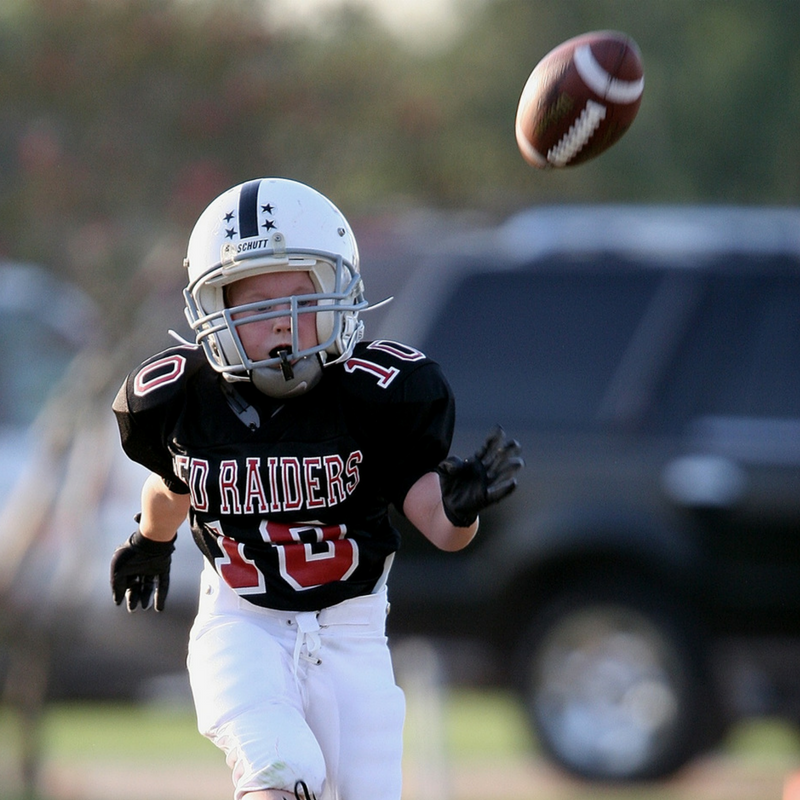
See how a child with left homonymous hemianopsia would miss a football player running towards him, but might still be able to catch the ball:

See how a child with right homonymous hemianopsia would see the football player, but might get hit in the face with the ball:
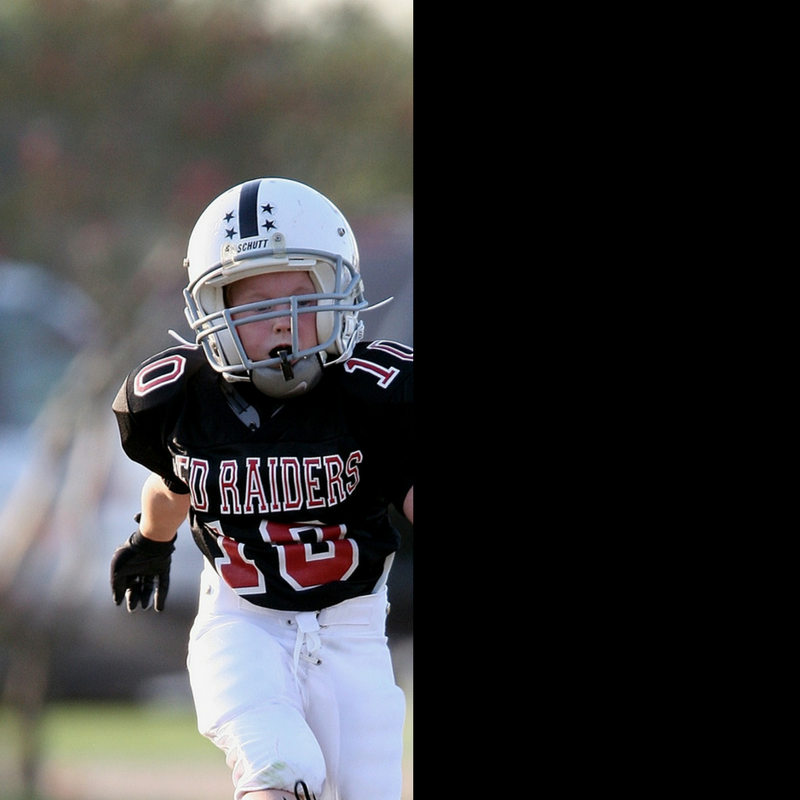
Some of these challenges can cause significant distress for the child which often makes them unable to fully participate in classroom and recreational activities. They may be startled when something suddenly appears in their field of vision – like a soccer ball in mid-flight – or may fear falling because they are unable to see obstacles. Although children with hemianopia may search the lost visual field by turning their head, this search may be slow. These slow search patterns do not allow them to fully understand the environment around them fast enough to avoid an obstacle, so children with homonymous hemianopia often avoid new environments altogether.
This may also affect the child’s socio-emotional well-being. For example, the child may not be chosen for team sports during recess. Because the eyes look normal, other children and teachers may not understand how the visual field loss affects the child. They may think “they are not trying hard enough”. Homonymous hemianopia may be hidden to all.
Homonymous hemianopia can seriously affect daily activities such as walking in crowded areas such as sidewalks, shopping malls and supermarkets, classroom hallways and playgrounds, seeing playmates or teammates, identifying and finding objects, crossing the street, reading and learning, and other activities of daily living such as cooking, pouring beverages, and especially driving. Driving can be particularly dangerous – research shows that adults with homonymous hemianopsia often do not scan far enough into their lost visual field to see pedestrians or cars coming into the intersection. (This blogger shares how she came to terms with her homonymous hemianopia and decided not to drive.
These problems can lead to leaving out of important parts of a scene and, consequently, to poor comprehension and social misunderstanding.
Watch this video which simulates right homonymous hemianopia. You can see how difficult it is to view oncoming cars and pedestrians.
Reading with homonymous hemianopia
Reading requires us to move our eyes smoothly across a line of text, see each word, and understand the meaning of each word in a fraction of a second. In languages like English, Spanish, and French, the eyes must scan smoothly from left to right and top to bottom across the page, briefly fixating on a word before moving on to the next word.
Because homonymous hemianopia causes a loss of half the central field of vision, the child only sees part of the word when looking at it. This makes word identification very difficult. The child must scan to see the entire word before reading it, adding an additional step to the process of reading the word. Longer words are never seen as a whole word resulting in various reading accuracy errors. This can include misidentifying a word, omitting letters, syllables, skipping over short words unintentionally, or guessing errors.
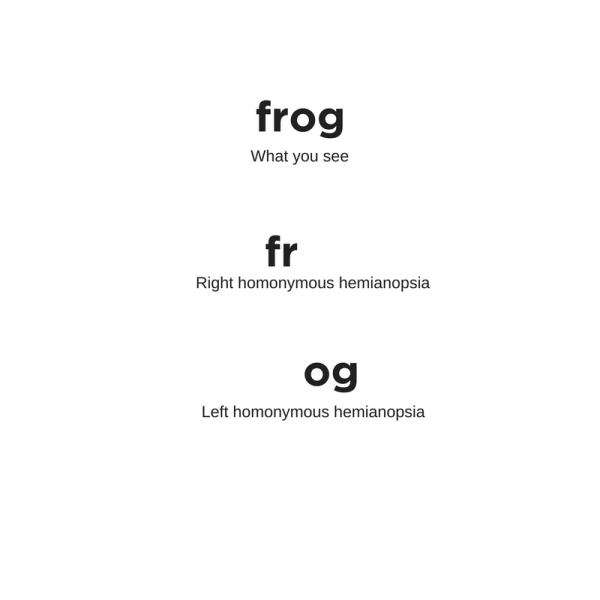
Guessing errors can be frequent because the child does not see the entire word. The child may identify the prefix only and then fill in the rest of the word based on prior experience. (As an example, a child with left homonymous hemianopia may be attempting to read the world peach for the first time, but sees only each. They may then guess that the word being read is either each or beach depending on the context within the sentence or prior experience, rather than actually reading the entire word.)
Left-sided homonymous hemianopia, which results after right-sided surgeries, can have a significant impact on reading. Children may have problems finding the next line of text or may skip the next line altogether. Also, because the first part of a word often contains information to quickly identify it, they may have frequent reading errors. This can be especially difficult for the beginning reader.
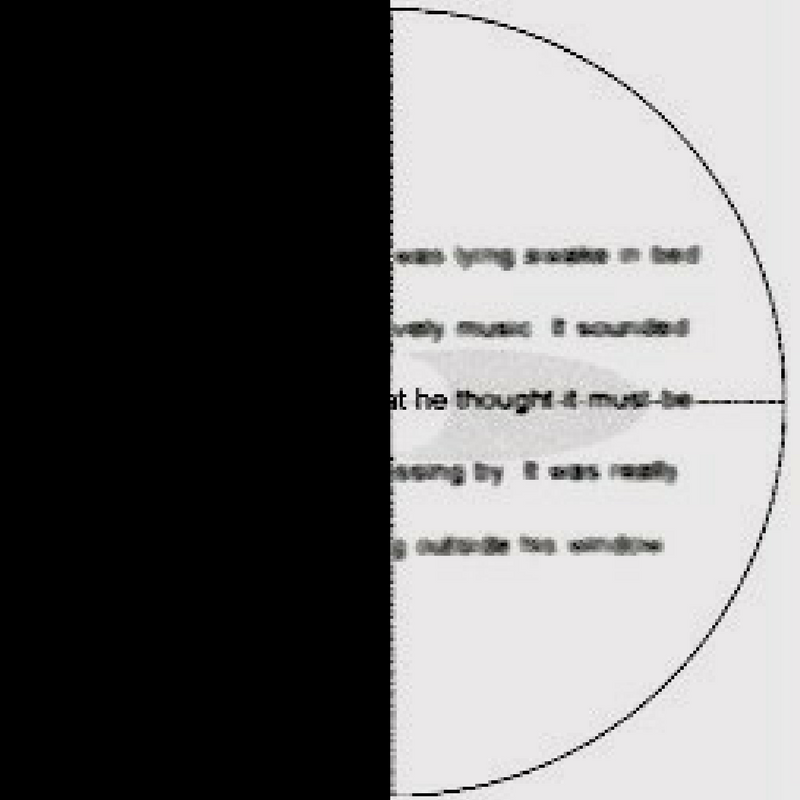
The greatest challenge – reading with right hemianopia
Right-sided homonymous hemianopia, which results after left-sided surgeries, can have a severe impact on learning to read in children who read languages that are written and read from left to right (English, French, Spanish) as the child is always reading into the blind field.
As a reminder, skilled readers take in words from a small area around the eyes’ fixation point – about four letters to the left and 15 letters to the right. Remember this image?
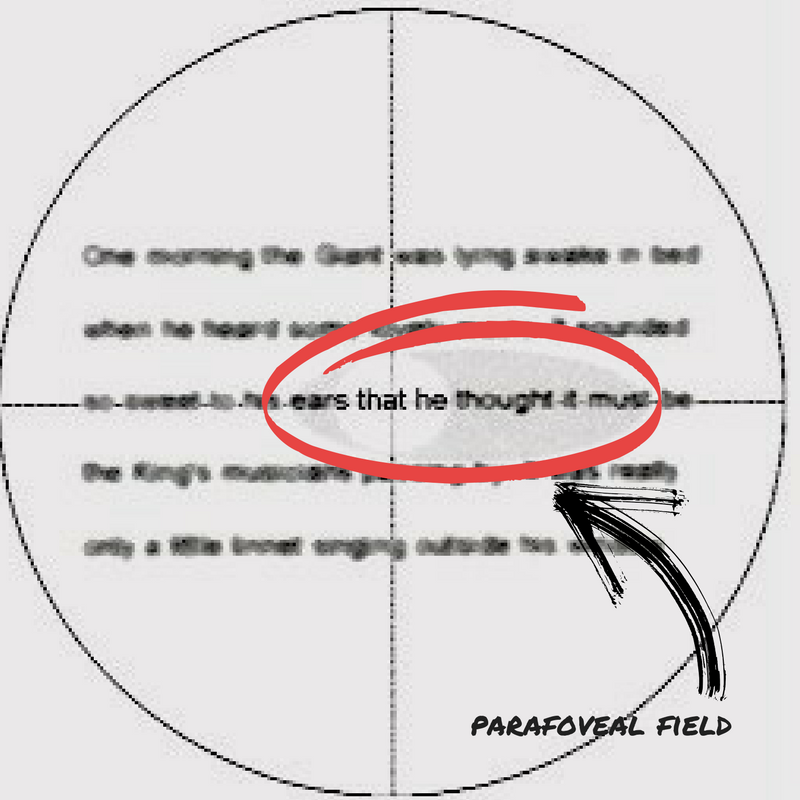
The more letters you can see on the right, the faster your reading speed (known as fluency) because you know which word to focus your eyes on next. Reading after left-sided surgeries is particularly challenging because not only is most of the word missing, but the right parafoveal vision – which includes those 15 letters to right – is gone. Like this:

This loss of the right perceptual span creates a bottleneck: the child will spend too much time finding the next word, focusing on it, re-fixating on it if necessary, and then extracting its meaning. This makes oral reading performance (how fast and clearly you read out loud, known as fluency) very challenging.
Adult readers with left-sided brain injury resulting in right-sided hemianopia describe severe frustration when reading because they are attempting to read into nothingness. For a child learning to read with right homonymous hemianopia, this can cause a dislike of reading at a very early age.
What’s It’s Like To Live With Homonymous Hemianopia?
Nicola McDowell explains how she has coped with homonymous hemianopia and other cortical vision impairment throughout her life and the challenges she has experienced and overcome. She also explains her many challlenges in her terrific blog here.
Vision after surgeries that remove an occipital lobe
Watch this webinar hosted by Perkins School for the Blind where our scientific advisory board member, Dr. Linda Lawrence, and our executive director, Monika Jones, discuss vision after surgeries that remove an occipital lobe.
Hemianopia stimulated with eye tracking software
This video first explains the various visual field deficits that can occur depending on where along the optic tract a lesion occurs. Then, starting at 3:18, this video explains hemianopsia by using eye tracking software to simulate the effects homonymous hemianosia on the screen watched by the person in the video. (In this video, hemianopsia is depicted with macular sparing – represented by the half circle in the center of the visualization. After hemispherectomy, TPO disconnection, or other surgeries which remove or disconnect the occipital lobe, mascular sparing does not occur except in rare circumstances. Instead, the blocked out area would be represented by a straight line down).
Teen With Right Hemispherectomy Reading With Eye Tracking Software
This video shows a teenager, who had right hemispherectomy as a toddler, reading with eye tracking software. Notice that he does not read lines of text smoothly, but often refixates on a word several times, skips some words, and has trouble getting to the next line of text with ease.
